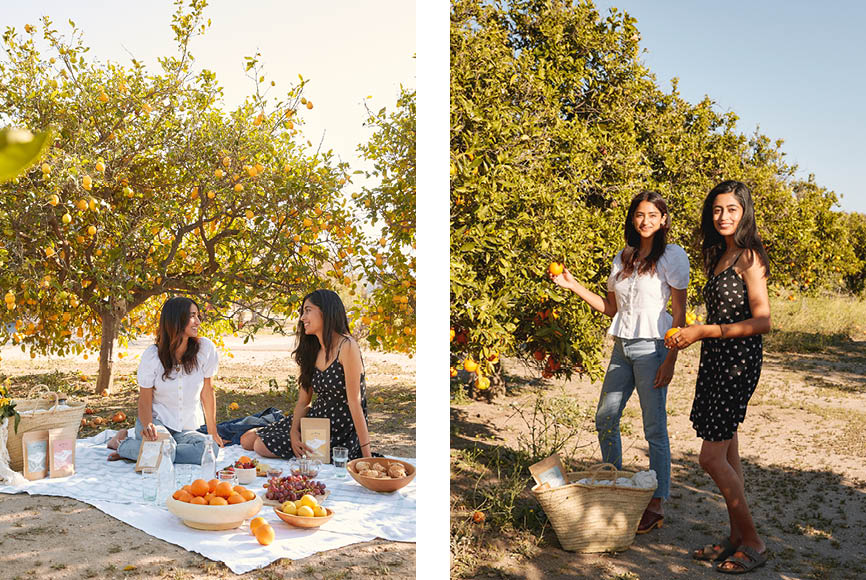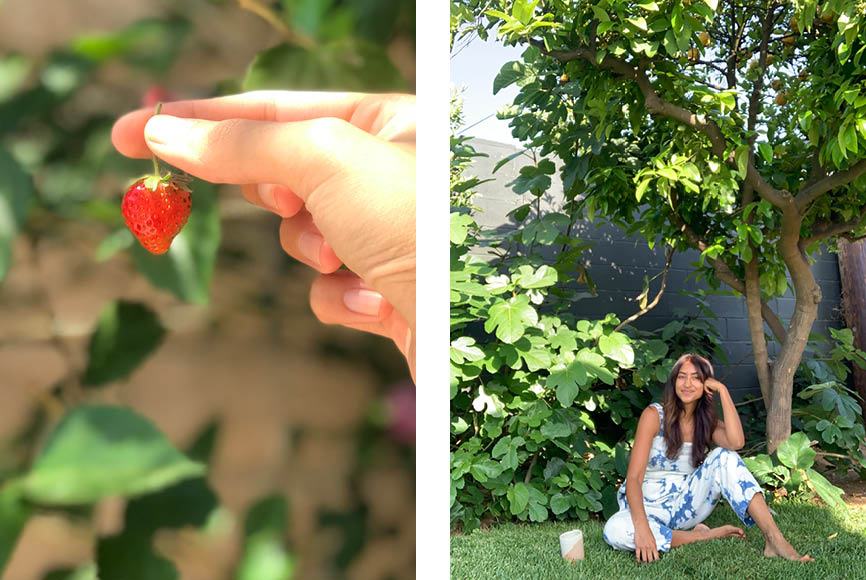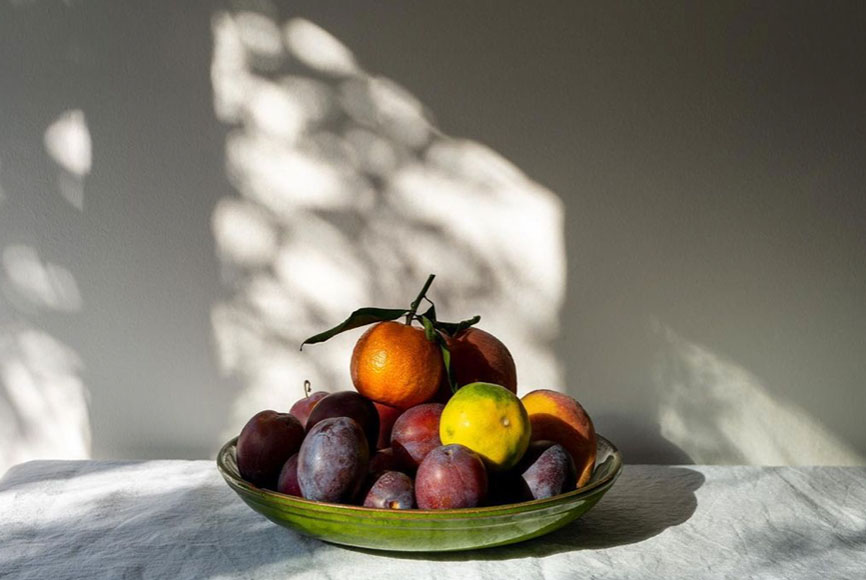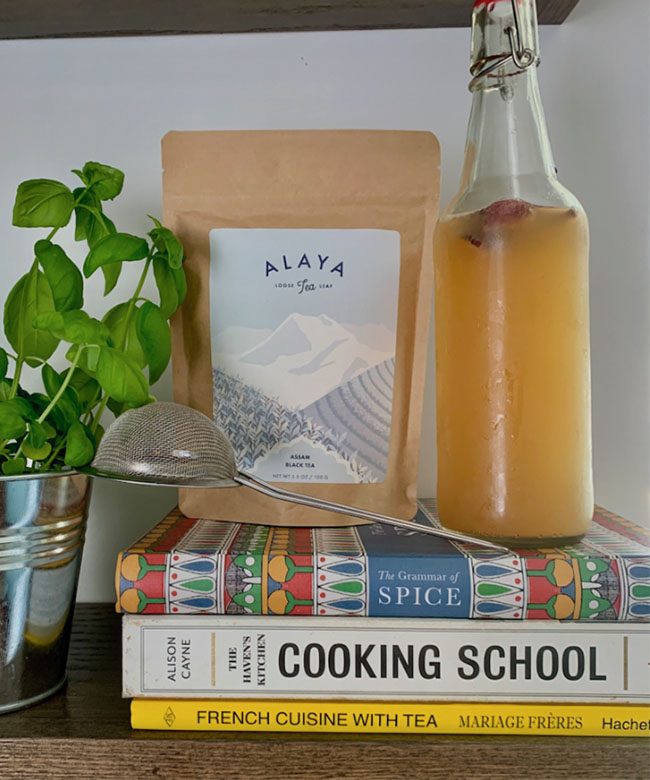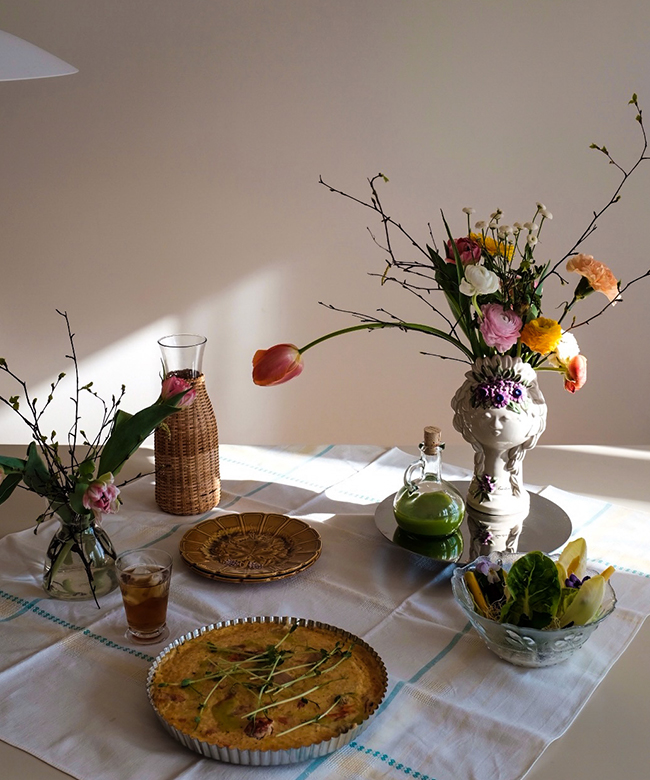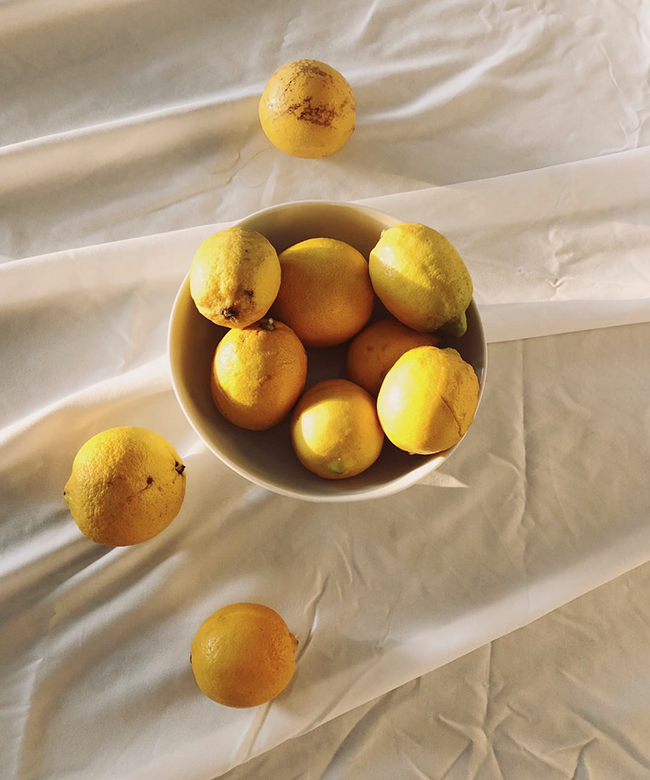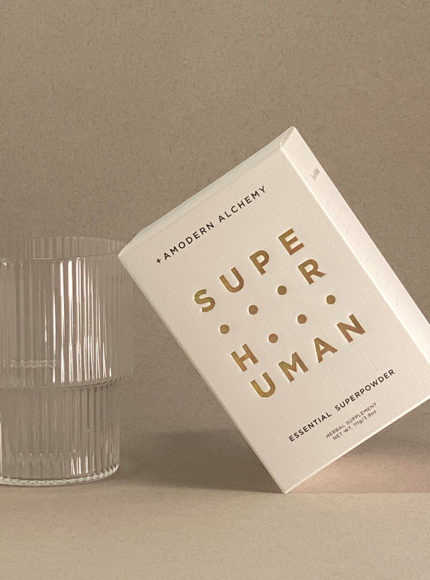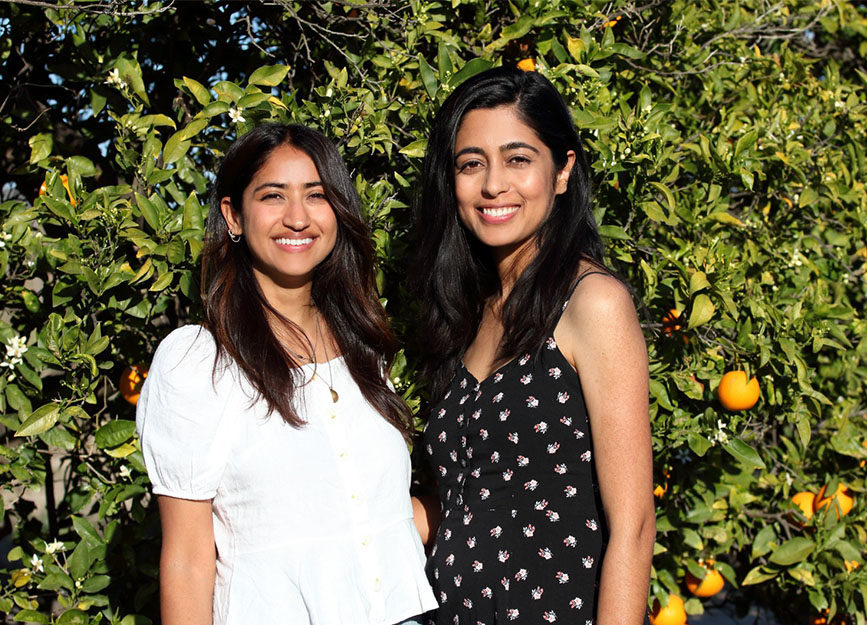

Late Summer
Esha Chhabra
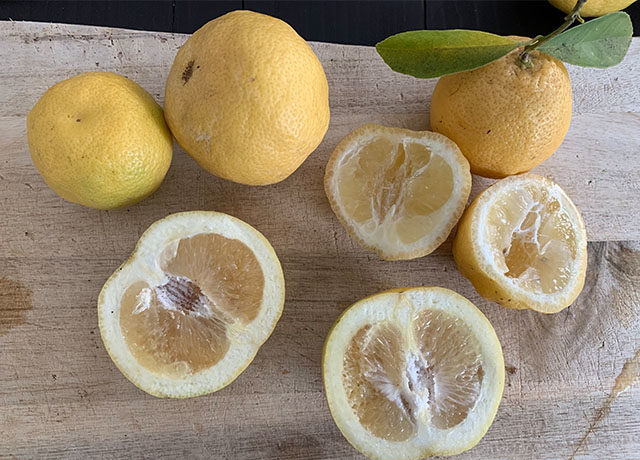

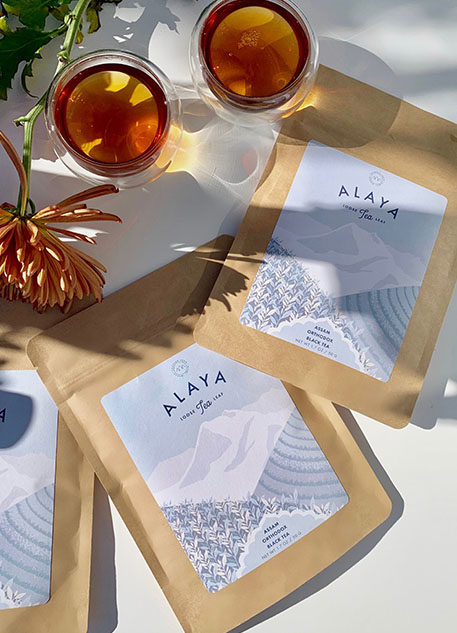

Late Summer
Food & Garden
Sustainable Living & Ethical Business: An Interview with Alaya Tea
We had the pleasure of interviewing the founders of Alaya Tea, which is an organic and biodynamic loose leaf tea company which sources directly from Indian farms at the base of the Himalayas, from which the company derives its name. After growing up drinking chai and traversing this mountainous area in India’s Northeast, visiting small farmers and tea estates, their founders Esha Chhabra and Smita Satiani were keen to build a company that respects these communities and addresses environmental challenges we face through agriculture. In this piece they share wonderful insights about their ethical business and how they live sustainably in their everyday lives.
Meet The Founders
Esha Chhabra is a writer who covers the environment, business, and agriculture. She has contributed to The Guardian, New York Times, Economist, and Forbes. She has been awarded multiple grants from the Pulitzer Center on Crisis Reporting as well as two reporting fellowships from the UN Foundation. For the past three years, she developed a book which looks at 30+ businesses around the world making a social and environmental impact with Patagonia. In 2019 she founded Alaya Tea with Smita Satiani.
Smita Satiani is an Indian-Pakistani American entrepreneur based in Los Angeles, California. She has spent the last 10 years working in social impact and climate change, across philanthropy, government and the private sector. In 2019, she cofounded Alaya Tea with the goal of bringing the Indian tea time she grew up with to a broader American audience, in a more people and planet-friendly way. Her work has been featured at the MIT Media Lab, and in Forbes, TechCrunch & The Wall Street Journal. She is currently an adjunct instructor at Carnegie Mellon University.
How does your day start? Tell us a bit about your morning routine.
ESHA: I wish I could say that I started every morning peacefully in the garden sipping on tea. But alas, working as a journalist and as a writer for companies in different time zones across the world means I may be on early morning calls with Europe or Asia. But if it’s nice out — which it is most days in southern California — I prefer to be on the patio, sipping on something hot and listening to the birdsong in the morning as I get ready for the day.
SMITA: I think this year has made routine more important than ever: to set boundaries and get in the right headspace for my day. So every morning to begin my day, I go for a one mile walk to my local coffee shop in Eagle Rock (a small town on the east side of Los Angeles, where I live). It incentivises me to get some morning exercise, and I put on NPR to get a sense of what is happening in the world or take a walking phone call if need-be. Ill typically have one espresso in the mornings, and then transition to tea for the rest of my day.
How do you interact with nature when it comes to the food you grow/prepare/eat?
ESHA: I feel grateful that I live near farms in Ventura County. So I get the opportunity to visit directly and get fresh veg. In addition, I’m always trying to grow different things each season (not always successfully). Last season, I had tomatoes, okra, cucumbers, strawberries, and countless herbs growing. This season, I’m going to tackle more. Sometimes the weather cooperates. Sometimes, your whole yard gets eaten by rabbits. But it’s fun and teaches me patience — things don’t grow in a day!
SS: This year is the first time in 10+ years that I have had a backyard. In my previous urban lifestyle in San Francisco, I had a small sunny porch and built a planter for a corner of it. I found it easy enough to grow a few herbs there, like rosemary, thyme, lavender, and mint which saved me a few trips to the grocery store every month. I loved going to the Ferry Building’s farmers market to pick up veggies and fruits. I also had 15+ houseplants inside my apartment, which served as natural air purifiers: a Snake plant (great for minimal sunlight and water), Monstera Deliciosa (reminded me of swiss cheese), ferns in the bathroom (they love the moisture), and towering fiddle leaf fig and money trees that I drove from San Francisco to Los Angeles when I relocated early in the pandemic.
Now that I’m in Southern California with a bit more space, I’ve been growing slightly more complex things like jalapeños, lemon verbena (great for herbal tea), basil, and I just planted a couple of persimmon trees for the fall. The previous owner of my house planted so many beautiful trees that I am now benefiting from: pomegranate, fig, a gigantic old olive tree, and to my surprise — a “fruit salad” tree: a double grafted pomelo and lemon tree that bears both fruits. I’ve been enjoying TONS of fresh pomelos and lemons from it all year long.
Best part of your day in terms of food?
ESHA: I love fresh foods, simply prepared, with minimal ingredients. For me, a fresh salad of tomatoes with herbs from the garden, some goats cheese, a little balsamic, and local olive oil with Maldon Sea salt — a dream for lunch or a summer dinner. But in the winters, I love pasta or all time comfort foods from India. I can’t say all lunches are taken without a digital screen. But I try. And getting a few minutes to simply savour and appreciate that food on your plate is probably the best thing in the day.
SS: Do I have to choose just one part of the day? If so, I choose breakfast – a warm bowl of oatmeal with raisins and banana in the morning is so comforting in the winter, or in the summer: greek yogurt, fresh berries, and an iced coffee to set the day. Lunch is usually a simple spinach or kale salad, with almonds or pecans and balsamic. My brother-in-law recently gifted me my first backyard grill, so I’ve been loving using it for grilling fish or veggies in the evenings. I’ve also been experimenting using a slow cooker for soups, love making my mom’s chana masala recipe, and have been recently making my own pizzas.
Favourite season or month for food and why?
SS: Summer! I love picnics, drinking wine in the sunshine, and long beach days where you stay on the sand until the sun sets. There are so many delicious summer foods that pair perfectly with these types of days: fresh watermelon and mint salad, tomatoes and basil with mozzarella, figs and goats cheese. Our teas are lovely iced, and in the summer I typically brew a Fresh Mint or Assam Black tea the night before, then throw it in the fridge overnight to enjoy cold the next day.
Where do you source your food from?
ESHA: I have a subscription to a CSA. So I get a fresh box of fruit and veg every week on my doorstep that’s sourced from California farms. Aside from that, I do shop at supermarkets for essentials, but I decided to support organic brands a few years, as I had done so much reporting on agriculture, and really saw the value in the organic ecosystem. It’s not perfect, but it’s a starting place. I also try to support brands that are building better models of business, or B Corps. And then, whatever is growing in the garden is an added plus in the summers.
If you garden, what is the hardest aspect of gardening and growing your own food that you didn’t foresee? How have you overcome it?
ESHA: I’m learning. I got hooked on a show called Gardeners World from friends in the UK. It’s so relaxing and allures you. After watching for a while, and just admiring these stunning gardens, I decided to tuck in and see what I could do in my little suburban plot. It’s been a ride. Doing it entirely organic means you have the patch of lawn on your street that has weeds, or that rabbits love to come feed on new growth. Then, there’s the gophers who last year buried through much of the back yard. And then there’s the intense heat of the summers in a south-facing yard that’s hard to reckon with in late August or September. Last year, we had temps like 113F which turns everything to a crisp. It’s definitely a learning curve to see what works in your soil, your climate, and with the wildlife around. I can’t say I’ve overcome it. But I’ve come to terms with the idea that I may not always have a manicured garden. It may be a bit hodgepodge with weeds and that’s OK. And seaweed is a simple, cost-effective organic fertiliser that works!
SS: Honestly, I would say I’m an average gardener, at best. I’m in awe of the skill and time it takes for farmers to grow food at scale. Its not my forte, however I do know and love nature. I feel the most alive when I’m outdoors and have a huge appreciation for animals, fresh air, and watching things blossom. I’ve been running small experiments in growing flowers, herbs, and fruits, thanks to a nursery right next door. The hardest part to me is the unpredictability and the daily tending. Sometimes it feels like my garden is like having a pet! Last summer, I traveled away for a week — when I got back, there had been a California heat wave, and the flowers and basil that I had recently planted were completely scorched. That being said, the medium sized plants and trees all made comebacks. It was reassuring to see how resilient those larger plants were.
If you garden, what are your favourite crops you are growing right now? What you would like to grow that you currently don’t?
ESHA: I’ve planted seeds for the following: tomatoes (different types), cucumbers, sweet peas, radish, eggplant, peppers, jalapeños, okra, and rhubarb. For herbs, I’ve got rosemary, thyme, sage, basil, borage, lemon balm, lemongrass, and lots of mint (yes, it really is like a weed!). Also I’ve got little strawberry pots — enough strawberries for the gardener to snack on while working. The herbs are happy, and I’m adding tulsi and dill to the collection, this season. Last year, I had a great harvest of sweet peas, tomatoes, peppers, and cucumbers. Plus, I’ve got loads of lavender, and then some seasonal flowers — sunflowers, zinnias, poppies – that help attract pollinators. Can’t forget the bees!
SS: I’m starting out small with a patch of pots for herbs and vegetables – right now I’ve got jalapeños, rosemary, thyme, lemon verbena, and basil which I’ve been putting on pizzas. I recently planted a few pots of Blue Hibiscus flowers for my deck, as well as bougevvilla and Yellow Trumpet flowers. We have a massive fig tree that has erupted in the corner of the yard alongside the lemons/pomelos. And — I just replanted some Cannabis from a friend (thanks to California law, you can home grow up to six. I would love to grow some more substantive crops in the fall – it would make me really happy to see baby cherry tomatoes sprouting.
Who and or what is your guiding inspiration when it comes to food?
ESHA: I grew up in a household where everyone cooked. My mom is an exceptional cook and other women in the family also love to cook, and are good at it. So I draw inspiration from these home cooks who tweak recipes, can whip up a meal from what’s leftover in the fridge, and can bridge cultures easily.
SS: Definitely my mom. When my sister and I were growing up, we resisted her pressures to learn how to cook. When I left home and went to college, I was like “Wait, why didn’t I learn how to make her chana masala again”? She is awesome at putting together quick, Indian meals: vegetable biryani, eggplant, saag paneer (she uses tofu instead of cheese). My moms daily chai habit was also my inspiration for wanting to start a tea company. Ever since I can remember, she’s created space in her day for a 15 minute chai break — robust, CTC (crush-tear-curl) Assam black tea cooked with fresh ginger, cardamom, whole milk, and sugar over the stovetop. I loved how non-negotiable that time was (and continues to be) for her.
What’s an average weekday dinner for you?
ESHA: Oh gosh, it really varies, based on what was in stock at the store, or what veggies were in the CSA box. Sometimes, it’s a simple panini style sandwich. Other nights it’s a rice pilaf with flavours of India. Or it could be a Mediterranean inspired salad with olives, crunchy lettuce, fresh cucumbers, tomatoes, and a little feta and sumac. Through travel, I’ve had the opportunity to experience so many cultures, that I love to experiment and try different flavours. The spice cabinet is full of different treasures: Ras-el-hanout, sumac, barberries, zaatar. I sprinkle these spices on everything, including fried eggs in the morning!
SS: Same — it really depends on the mood, or what I have laying around! Pasta is always an incredible base that can easily be adjusted for a variety of seasons and weather. Also… who doesn’t love a good carb at the end of the day? For my pasta, I love cooking down anchovies with tomatoes, olives, and capers for a salty flavour, or making soba noodles with crispy kale and tahini dressing and coconut shred to top. I’ve also recently started making my own pesto – mixing up spinach, kale, cilantro, garlic and olive oil in a blender. It’s super easy and delicious with some greens on the side.
Favourite vegetable to cook with and why?
ESHA: I love eggplant. In India, there’s a dish where we roast the eggplant on the stove to give it a little char and then throw it in the oven for the flesh to cook through. Once it’s softened, you add sautéed onions and spices. It’s delicious. That and a fresh tandoori naan or roti is one of my favourite meals. But I love eggplant also because it’s so versatile. You can do a miso-glazed eggplant with sesame seeds, or make baba ghanouj, or grill it and layer it with other roasted veg in sliced sourdough for a delicious panini. It’s a great medium for different flavours.
SS: I love the ease and comfort of a sweet potato. I typically cut one in half, sprinkle it with paprika, cayenne, olive oil, salt and pepper, and throw it in the oven to roast for 45 minutes. The result is a soft, roasted potato great for DIY tacos, rice bowls, or over a spinach salad.
As the sunset begins, how do you close your day? (This can be food, wine, tea, etc.)
ESHA: These days, since we’re mostly working from home, I find myself on the patio, in the garden, drinking some tea. I love our Darjeeling teas because they’re lighter, more floral, and can be drunk without milk. So I usually make a light cup of Darjeeling and enjoy the evening breeze.
SS: I have a little sunny corner of my yard where I enjoy our caffeine-free Chamomile Flowers in the evenings. They are beautiful, whole flowers, and taste sweet (with no added sugar or honey needed). I brew the Chamomile for 3 minutes with an infuser, and then strain out the flowers. If its been a particularly long day, I use them again for a second cup.
Best advice you have for someone looking to eat more sustainably?
ESHA: Try growing one or two things – even if you’re in an apartment or small space. It’ll just connect you to your food. Otherwise, source from local makers, and growers, if possible. The produce will have much more flavor as well.
SS: Find a bulk store near you to reduce the amount of unnecessary packaging in your pantry. I typically hit up Re-Grocery, a local plastic-free/bulk store here In la for nuts, spices, coffee, pasta, and even cleaning products. You bring your own jars and can refill them based on however much you need.
What are your latest efforts towards living a greener life?
ESHA: Don’t buy something unless you really need it. We’ve become so accustomed to shopping as a pastime. I remember the days that I too would go to the mall just to peruse. I haven’t done that in years now. And keep repurposing things. I’m growing some seedlings this season in cardboard boxes. I’m always thinking if something can be repurposed, before I chuck it in the bin, even if it’s recyclable.
SS: Just being more aware of my “stuff”. A recent move forced me to examine all the things in my apartment (“Am I really paying to move these 8 pots that I haven’t used in years?”). I recently purchased a Sodastream so I can stop buying sparkling water, and I’ve been brewing my own kombucha with our DIY Kombucha Kit. I’ve also been composting my food scraps for the last few years, and it has cut down on my own personal waste tremendously. Some cities (like San Francisco) have incredible municipal compost programs which make it so easy to have a small compost bin under your sink. Now, I’m experimenting with a compost pile in my backyard for fruits and veggies.
In your opinion, what is the most important food item to make sure is organic?
ESHA: Thin-skinned fruit and veg where you’ll be eating the peel. There’s ofcourse the dirty dozen list. But things like tomatoes, berries, cucumbers, lettuce, peppers. If it has a thick outer skin, then hopefully you’re not eating residues because you can peel it off. That said, all these chemicals go into the soil that feeds the plants, so ideally, buy (or grow) as much organic as you can. Herbs, for example, are so easy to grow and then you can just pluck from your garden and have fresh.



















